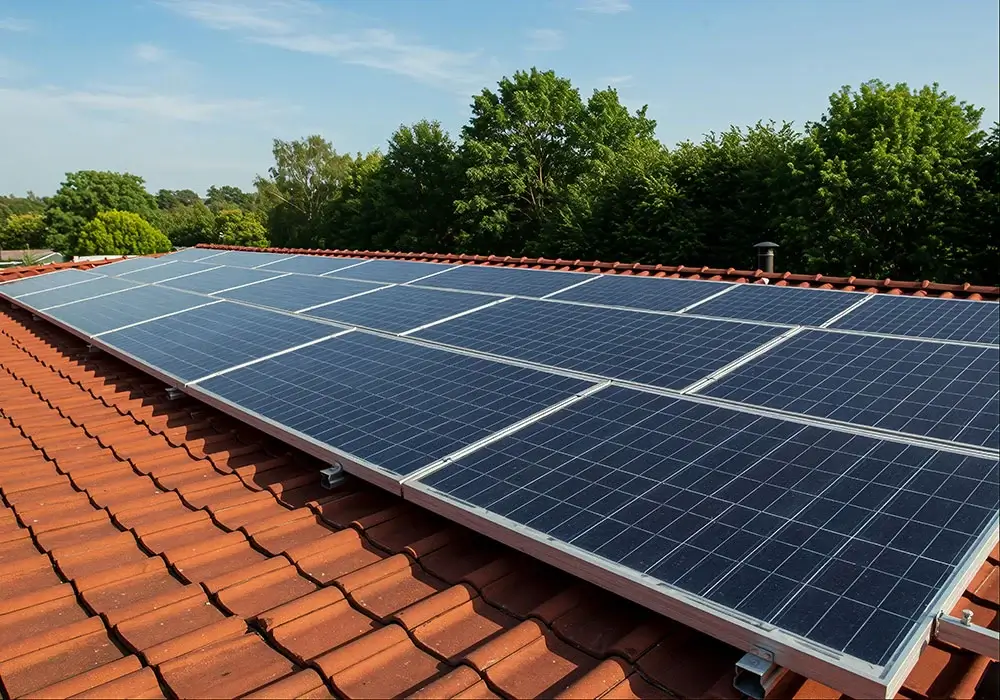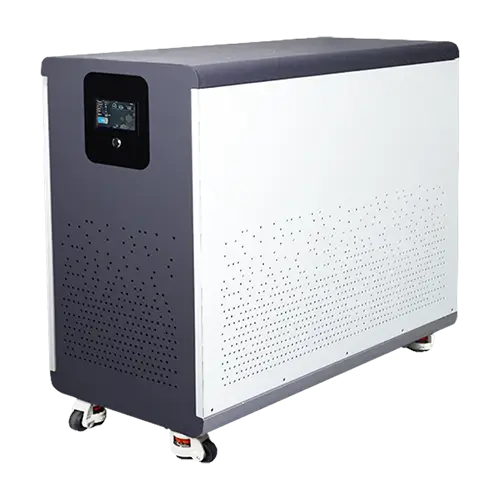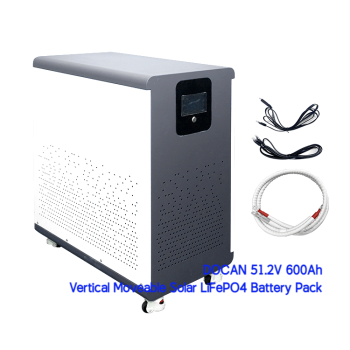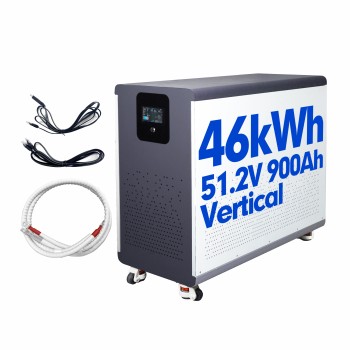
Solar energy is a clean, abundant resource, but its intermittent nature—producing power only when the sun shines—requires effective storage solutions to ensure round-the-clock availability. A battery for solar storage bridges this gap, storing excess energy generated during the day for use at night, during cloudy periods, or during power outages. From lithium batteries for solar to solar home battery backup systems, these batteries are essential for achieving energy independence and maximizing the value of batteries for solar energy. This article explores the types, sizing, and system configurations of solar storage batteries, offering practical insights for homeowners and businesses alike.
Types of Batteries for Solar Storage
Choosing the right battery is critical for optimizing a solar energy system. The most common options for batteries for solar energy include lithium-ion, lead-acid, and emerging technologies.
Lithium-Ion Batteries
Lithium batteries for solar are the preferred choice for modern solar systems due to their high efficiency (90-95%), long lifespan (10-15 years or 5,000+ charge cycles), and compact design. In our previous article, we discussed in detail how to select the right lithium battery for solar. Their ability to handle frequent charge-discharge cycles makes them cost-effective over time, despite higher upfront costs ($500-800 per kWh).
Lead-Acid Batteries
Lead-acid batteries are a budget-friendly alternative, costing $100-200 per kWh. They’re commonly used in off-grid systems but have lower efficiency (70-85%) and shorter lifespans (3-7 years). These batteries are best for applications where cost is a priority and space isn’t a concern.
Emerging Technologies
Innovations like flow batteries and sodium-ion batteries are gaining attention. Flow batteries offer scalability for large systems, while sodium-ion batteries could reduce reliance on lithium, making them a sustainable option for the future. While not yet mainstream, these technologies promise to enhance batteries for solar energy.
| Battery Type | Efficiency | Lifespan | Cost ($/kWh) | Best Use Case |
|---|---|---|---|---|
| Lithium-Ion | 90-95% | 10-15 years | $500-800 | Home, commercial |
| Lead-Acid | 70-85% | 3-7 years | $100-200 | Budget off-grid |
| Flow Batteries | 75-85% | 15-20 years | $800+ | Large-scale (emerging) |
Sizing a Battery for Solar Storage
Selecting the right battery pack for solar requires calculating your energy needs, determining battery capacity, and choosing an appropriate voltage. Additionally, understanding how long it takes to charge the battery is crucial for system planning.
Calculating Energy Needs
To size a battery, start by estimating your daily energy consumption. For example, a household using 27 kWh per day (800,000 Wh/month) needs a battery that can store enough energy for nighttime, cloudy periods, or peak demand. The formula for required battery capacity is:
Battery Capacity (kWh) = Daily Energy Consumption (kWh) - Daily Solar Production (kWh) + Reserve (kWh)
- Daily Energy Consumption: 27 kWh (based on 800,000 Wh/month ÷ 30 days).
- Daily Solar Production: Depends on solar panel wattage and sunlight hours. A 5 kW array with 5 hours of sunlight produces 5 kW × 5 h = 25 kWh/day.
- Reserve: Add 20-30% extra capacity for inefficiencies or unexpected needs (e.g., 27 kWh × 0.2 = 5.4 kWh).
Example: If your home uses 27 kWh/day and your 5 kW array produces 25 kWh/day, you might need a battery to store the excess (25 kWh - daytime use) plus a reserve. Assuming 10 kWh is used during the day, the battery needs to store 15 kWh (excess) + 5.4 kWh (reserve) ≈ 20 kWh.
Batteries can also be used during the day, such as during peak electricity rates (in grid-tied systems with time-of-use billing) or when solar production is low (e.g., cloudy weather). A 10-20 kWh battery is often sufficient for a home with 27 kWh daily consumption, providing flexibility for both nighttime and daytime use.

Charging Time Calculation
Charging a battery for solar storage depends on solar panel output, battery capacity, and system efficiency. The formula for charging time is:
Charging Time (hours) = Battery Capacity (kWh) ÷ Solar Panel Output (kW) × Efficiency Factor
- Battery Capacity: E.g., 10 kWh.
- Solar Panel Output: E.g., 5 kW (under full sunlight).
- Efficiency Factor: Accounts for losses (typically 0.9 for 90% efficiency).
Example: For a 10 kWh battery charged by a 5 kW solar array at 90% efficiency: 10 kWh ÷ 5 kW × 0.9 = 2.22 hours (approximately 2-3 hours).
Factors like cloud cover, panel orientation, or seasonal sunlight variations can increase this time. For instance, if effective sunlight drops to 3 kW, the charging time becomes 10 kWh ÷ 3 kW × 0.9 ≈ 3.7 hours.
Battery Capacity and Voltage
Battery capacity is measured in kilowatt-hours (kWh). Small systems (e.g., cabins) may need 1-5 kWh, while homes often require 10-20 kWh.
Voltage options include:
- 12V: For small systems like RVs or cabins.
- 24V: For medium off-grid setups.
- 48V: For larger residential or commercial systems, offering higher efficiency.
The original outline mentioned “51V,” likely a typo for 48V, a standard for high-performance systems. Ensure the battery voltage matches your inverter and system design.
Coupling Systems
Solar storage systems use either DC-coupled or AC-coupled configurations to integrate batteries for solar energy with panels and inverters, each with distinct efficiency and compatibility considerations.
In DC-coupled systems, solar panels charge the battery directly, requiring only one DC-to-AC inversion when powering appliances. This results in a high round-trip efficiency of up to 97.5%, minimizing energy losses. DC-coupled systems are ideal for off-grid or hybrid setups where efficiency is critical.
In AC-coupled systems, solar energy is converted from DC to AC for grid or home use, then back to DC for battery charging, involving multiple inversions. Each inversion causes a small energy loss, reducing the round-trip efficiency to 85-90% (10-15% energy loss). AC-coupled systems are common in grid-tied setups with existing inverters designed to convert solar panel DC output to AC for household use.
While DC-coupled systems are more efficient, they can be challenging to configure in existing solar setups. Most solar systems already include inverters paired with batteries for solar storage that convert DC to AC, making AC-coupled systems easier to implement without replacing existing hardware. To use a DC-coupled battery, you may need a compatible hybrid inverter that supports direct battery charging, adding complexity and cost. Choosing between DC and AC coupling depends on your system’s design, budget, and efficiency goals.
Recommended Battery Pack for Solar Storage
For those seeking a reliable battery pack for solar energy storage, the 51.2V 940Ah/900Ah/840Ah LiFePO4 Battery Pack from Docan Power is an excellent choice. This plug-and-play lithium iron phosphate (LiFePO4) battery offers a capacity of 46-48 kWh, making it ideal for large-scale residential or small commercial applications. Its vertical and movable design ensures easy installation. Equipped with high-performance LiFePO4 cells, the battery provides up to 8000 cycles for exceptional durability. With a 51.2V configuration, it is optimized for modern solar systems, delivering efficient energy storage and discharge. Additionally, the built-in intelligent BMS (Battery Management System) offers multiple protections for safe and stable operation.

Conclusion
A battery for solar storage is the key to unlocking the full potential of solar energy, offering energy independence, cost savings, and resilience against outages. By choosing the right lithium battery for solar, sizing it with precise calculations, and optimizing system efficiency, you can harness the sun’s power day or night. Whether you’re powering a home or an off-grid retreat, batteries for solar energy empower you to live sustainably.
FAQ: Common Questions About Solar Storage Batteries
How do I know what battery capacity I need?
Calculate your daily energy use (e.g., 27 kWh for a typical home) and subtract your solar panel output. Add a 20-30% reserve. A 10-20 kWh battery often suffices for homes, covering nighttime and daytime needs.
How long do solar batteries last?
Lithium-ion batteries, like LiFePO4, last 10-15 years or 6,000+ charge cycles. Lead-acid batteries last 3-7 years. Lifespan depends on usage and maintenance.
Can I use a solar battery during the day?
Yes! Batteries can power appliances during cloudy periods, peak electricity rates, or when solar production is low, especially in grid-tied systems.
Are 48V batteries better than 12V or 24V?
48V batteries are more efficient for larger systems due to lower current and reduced wiring losses. 12V or 24V are better for small setups like RVs.
Can I use any battery with my solar system?
No, the battery must match your system’s voltage (e.g., 12V, 24V, 48V) and be compatible with your inverter.






Leave a Comment